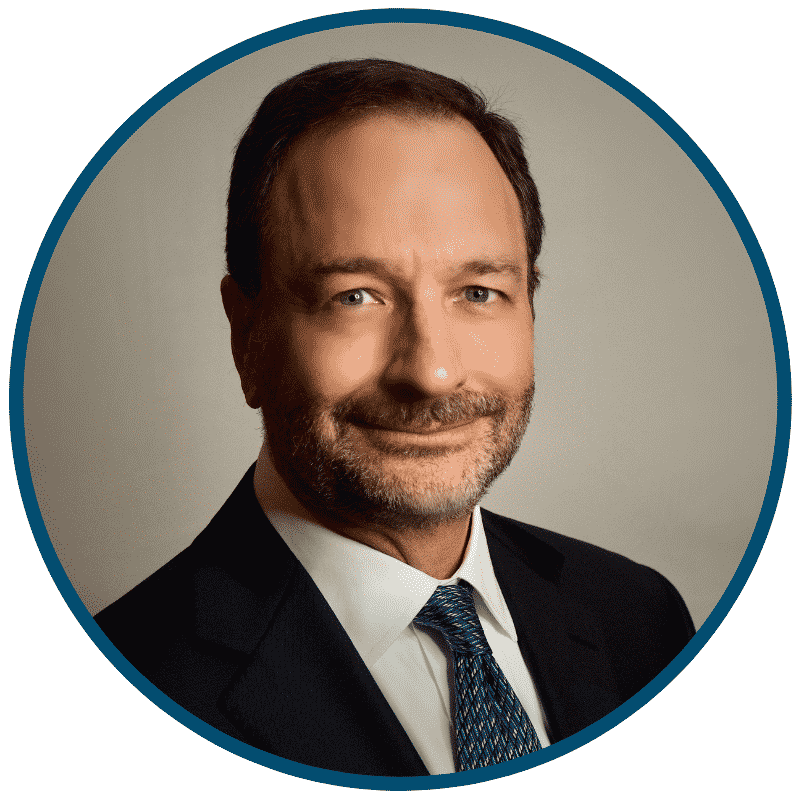How Nonprofits Are Partnering With Foundations During COVID-19
Posted October 26, 2020
We recently spoke with leaders in the field about how working with foundations has changed in recent months - and how they're adapting their strategies in response...

Rachel Gasana
Director, Private Sector Partnerships at Partners In Health
How partnering with foundations has changed…
It’s been fantastic to see foundations embrace their leadership role in driving large-scale change within the US and globally. The events of 2020 have accelerated the sense of urgency to completely rethink the systems that have failed marginalized populations for centuries, and that urgency has spurred creativity. One of the most notable changes I’ve observed during this crisis is that foundations are not pulling back but rather leaning in to invest even more – and in more innovative ways – during this time of uncertainty. Many are examining the incentives (both positive and negative) their current funding practices create for their community of grantees, and engaging meaningfully with NGO partners to experiment with new ways to allocate capital and nurture systemic changes. All of these trends were growing before 2020, but the events of this year have driven many conversations, commitments, and coalitions that may have taken longer to crystallize otherwise.
Practically speaking, a lot of our partners have reached out proactively to investigate how this moment in history has affected our patients, our communities, our staff, and our organizational health. They’ve offered increased flexibility in their funding, and opportunities to think with them about how to evolve past where we were and into a better future. NGOs need to embrace the engagement and expertise foundations bring, and be ready to share their own, in a shared dialogue to shape initiatives that are responsive, reflective, and driving towards equity.
On the role foundations play in Partner In Health’s overall fundraising strategy…
Foundations play a key role in our fundraising strategy. Often they are the group we approach for partnership on our most ambitious projects – pursuing national health care reform in Lesotho, for example, or implementing a novel approach to support new mothers in central Haiti. They are frequently first responders when disaster strikes with critical funding flexible enough to allow pivots based on the situation on the ground. We’ve also worked with foundations who are collaborators themselves on our fundraising strategies for projects where they are already invested – opening their networks and making introductions for us to increase visibility, or allowing us to leverage their dollars in a matching campaign.
On responding to the increase in family foundations…
One strategy we are pursuing is proactive engagement with financial services firms, community foundations in major markets, and other philanthropic advisory service firms, where many of these family foundations are housed as donor-advised funds. These conversations can lead to opportunities to engage family foundations either indirectly or directly with our work. Another strategy is rethinking how our foundations team integrates and coordinates with our major giving and principal gifts program. We’ve learned a lot from our colleagues on how to customize our stewardship and cultivation for an audience of foundations that may be new to philanthropy but has a big appetite for impact.

David Gordon
Senior Director at MIT Office of Foundation Relations
How partnering with foundations has changed…
At least three major trends are having a big impact on grant seeking these days.
First, most foundations have become much more flexible in their dealings with grantees. Due to the disruptions of COVID-19, many funders have been very open to approving modifications or no-cost extensions of current grants and have given grant recipients extra time to file reports.
Second, the widespread protests this year calling for steps to address structural racism have led many foundations to reallocate their resources and support a range of racial justice efforts. Relatedly, funders have placed even more emphasis than ever before on assessing how grant seekers manage diversity, equity, and inclusion issues within their organizations.
Third, as nonprofits have had to pivot quickly from in-person to virtual delivery of services, many funders have bolstered the nonprofit sector through a variety of capacity building and leadership development initiatives.
So, how does one navigate all of these trends? Much of the answer involves being planful yet nimble at the same time. Nonprofits with clear strategies and enough person power to handle quick shifts in approach will be well-positioned to inspire trust from potential funders – if foundations see where you’re heading and have confidence in your staffing, you’ll have strong chances to garner support.
Beyond that, successful grant seeking these days still depends on many basic best practices – being “ready” to launch new projects, developing strong pitch ideas, building strong relationships with foundation boards and staff, and stewarding those relationships carefully.
In the end, flexible grant makers and nimble grant seekers will continue to find much in common, even during these highly stressful times.

Laura Katz Leacu
Director, Institutional Giving at Hebrew SeniorLife
How partnering with foundations has changed…
I think when COVID first hit, and really all the way through July, foundations were reacting in ways I had never seen before. They became very flexible with grantees and were truly dropping everything to help provide general operating support and COVID relief. They played a critical role in helping organizations make ends meet and provide services and care for constituents.
Now that we’re eight months in to dealing with COVID, foundations have remained understanding of the stresses we’re facing and how we’ve had to adjust goals and timelines, but at the same time, the emergency funding has become much more targeted. I believe many foundations are rethinking their strategies and seeking to understand the role they will play in the coming months and years. I’m hearing them ask more frequently again: How can this be a long-term project? What are the measurable outcomes? What steps will each stage entail? And I don’t think this is a bad thing by any means; it’s the reality of the situation. The pandemic has highlighted larger structural issues that need addressing, and foundations are deeply considering how and where they want to focus their attention, given that it’s limited.
In terms of racial justice, we’ve seen a huge rise in grant-based philanthropy. From what I understand there has been more activity there in the last 3-4 months than we’ve seen in years. All foundations are thinking about racial justice, and nonprofits need to be thinking about how their mission intersects, as well. Racial justice is only going to grow as a priority, so you have to be addressing it, or you’ll be left behind.
On the role foundations play in Hebrew SeniorLife’s overall fundraising strategy…
Corporate and private foundations make up around 20% of our giving at HSL, which I believe is fairly well aligned with the national average. 20% may not sound significant, but the impact of the giving certainly is. We have really relied on foundations to bring some of our innovations to scale, especially for projects that may not be as interesting or appealing to individual donors. For instance, foundations have provided funding for our projects that have policy implications for vulnerable populations, such as low-income seniors. In this way, their funding has been critical.
I would also share that an important component to our success with foundations is understanding which should be treated as a ‘standard’ foundation and which should be approached with a strategy that more closely aligns with major gifts. We find this is often the case with family foundations, which require greater cultivation and more relationship-building.

Adam Sirois
Director of Institutional Giving at Montefiore Medicine
How partnering with foundations has changed…
I’ll break it in two parts. 1) COVID has been interesting. There has been a silver lining in terms of donor relationships; donors have been extremely open and forthright with us about approaching the problem and working as partners. So we have been able to have conversations with donors about our needs, and they’re quite transparent as well. It’s made it more clear, sped things up, and the funding has been mobilized more rapidly.
2) We’re the largest employer in the Bronx, the most diverse country in America. So, in pursuing large-scale institutional grants, we’re hoping to secure funding that could have an impact on our substantial workforce and the community we serve. I’m very excited about the opportunities this offers.
On the role foundations play in Montefiore and Einstein’s overall fundraising strategy…
Foundations are the largest of source of funding for Montefiore in terms of the development office. For Einstein, the largest source is the still the NIH and foundations are the 2nd.
On responding to the increase in family foundations…
We’ve been able to successfully attract funding from new donors and also lapsed donors in light of COVID – it’s been a good way to motivate new donors and also reinvigorate those old relationships. We have noticed the increase in family foundations, and we have been fortunate to benefit from it. COVID has motivated certain family foundations to work with us since they see that we are on the frontlines, both in terms of clinical care for our community and also the research for vaccines and therapeutics.

Larry Seamans
President at FamilyAid Boston
How partnering with foundations has changed…
Our relationships with foundations have deepened in parallel to the deepening COVID and racial justices crises. There has been much more frequent communication about the needs of our clients (primarily single mothers of color and their children), strategy discussion about how to best reduce the city’s growing family homeless crisis, and a willingness to increase or redirect existing resources to the most urgent of our families’ many needs. Our foundation partners are also connecting us to other foundations, individuals and resources.
On the role foundations play in FamilyAid’s overall fundraising strategy…
Foundations continue to be the literal foundation of our current work, serving both as thought partners and financial investors in our innovative prevention, children’s and housing programs. Many are long-time supporters who are championing solutions to family homelessness.
On responding to the increase in family foundations…
We continue to build connections and relationships with family foundations. Our experience is that family foundations, like institutional ones, are seeking a greater connection and participation in our strategy development.

Lisa Glazer
Senior Director, Institutional Giving at Pine Street Inn
How partnering with foundations has changed…
A lot has changed very quickly – we are in a different world in our work with foundations. Many responded to the pandemic with incredible speed. From early on, some of our key partners reached out to ask how they could help and many switched to an “emergency” mode – streamlining procedures, providing spontaneous grants, reducing reporting requirements. There’s been an extraordinary outpouring of generosity and it’s made a huge difference in our frontline work with men and women experiencing homelessness.
We have also seen an increased focus on racial justice from many funders. Several have quickly developed substantive new funding streams and we are also seeing a racial equity lens in the questions we are answering in proposals. There’s a deeper emphasis on demographics, questions about our anti-racism work, more questions about systems change and “upstream” solutions and how that advances racial equity. It’s exciting to see this shift taking place.
From our end, almost every aspect of our work with homeless and formerly homeless men and women has changed because of the pandemic and we are also in the midst of an agency-wide process of becoming a stronger anti-racist organization. So we have a lot to tell our foundation partners!
We prepared a two-page proposal about our pandemic response in March and shared that quickly and widely as well as responding to RFPs and outreach from donors. We’re not able to do in-person meetings or site visits, so we’ve relied heavily on Zoom meetings and presentations, both one-on-one and for groups of donors. We’re spending a lot of time staying in touch in a personal way, including calls and emails, not just relying on written reports.
It can be hard to convey the enormity of everything we’ve gone through and how much foundation support has meant to our guests and tenants. It feels like an honor to be sending this message. We’re doing everything we can to share the voices of our heroic frontline staff, the stories of shelter guests who got sick and then recovered, the dramatic reduction in the number of positive cases in our shelters, the deeper changes that are underway. We can’t go back to overcrowded shelters and we’re dramatically increasing our supportive housing. There’s always been a sense of urgency in our work but this is of a whole new magnitude.
On the role foundations play in Pine Street’s overall fundraising strategy…
In the past few years, we’ve expanded our foundation and corporate fundraising team and we’re an increasingly important part of the overall fundraising strategy. We’re often the first “content providers” – for example the proposal we developed on our COVID-19 response was used not only with foundations, but also by major gift officers and also shared with volunteers. We’re in a capital campaign right now and foundations have been pivotal to its progress, providing some of the highest-level gifts. Our strategic plan includes several innovative pilot programs to end homelessness earlier and faster for the men and women with whom we work. Foundations have played an especially important role helping us establish and scale up these pilots.
On responding to the increase in family foundations…
We are definitely seeing this. We’re also seeing that family foundations that started small, with few formal procedures, are growing and adding staff and new requirements for proposals and reporting.
We’re adapting through increased cooperation between our foundation and corporate team and our amazing team of major gifts officers. We look closely at each family foundation and try to determine the best approach. We ask where the relationship is strongest and what kinds of proposals and/or reporting are required going forward. We frequently work together – sometimes a family foundation becomes part of the foundation and corporate team outreach, other times it stays with a major gift officer but the foundation and corporate team might handle the proposals and reports. We are flexible and work in whatever way we think will work best for the donor.

Beth Brazil
Director of Foundation Relations at Woodwell Climate Research Center
How partnering with foundations has changed…
Both COVID-19 and racial justice have changed the lens of how many of us think and act. I have found that as a result of COVID-19, most foundation staff are not traveling. Thus, I have been spending a lot of my time since March on Zoom calls with program officers – both with foundations we have a long history with as well as new ones – discussing our programs and funding needs across all of our initiatives. As a result, we have been invited to submit many proposals. In regard to the rise of racial justice as a national priority, diversity, equity and inclusion is also an institutional priority at Woodwell Climate Research Center. We have seen an increase in foundation opportunities to address these important issues and have several pending proposals. In particular, I have seen more foundations interested in the connection between climate change and racial justice because it disproportionately impacts vulnerable populations. The importance of racial justice is woven into much of our existing work and emerging priorities, from recruiting more diverse staff and board members to working with indigenous communities in the Arctic and Amazon, and working with underrepresented towns to incorporate climate risk in their planning.
On the role foundations play in Woodwell’s overall fundraising strategy…
Foundations play a vital role in the overall fundraising strategy at the Woodwell Climate Research Center. In fact, my position was created to increase funding from private foundations and corporations. They are important strategic partners who become invested in our work, not only financially, but they also want us to succeed in transforming climate science into action. Whether the foundation is small or large, we develop a close relationship with its staff. This enables us to conduct our research with well-defined outcomes. Recently, more foundations have approached us to help guide their future investments around climate change. Clearly they also view us as a valuable partner!
On responding to the increase in family foundations…
The Woodwell Climate Research Center is fortunate to receive donations from quite a few family foundations. While many family foundations have been addressing the immediate needs caused by COVID-19 and racial justice, we have seen an increase in giving from our closest family foundations who view climate change as an urgent issue. One way we have been adapting our approach is to engage these donors about more specific targeted needs than ever before. As an example, one of our research projects was not fully funded this year. One of our donors, who also volunteers their time on this project, has a family foundation. They decided to step up and offer a challenge grant to attract more donors to ensure this important project can be implemented. Others have simply increased their support through their family foundations because of the clear evidence that climate change is impacting society now. We are grateful for all of our donors and their commitment to our mission.

Ben Maltz
Senior Director, Foundation and Corporate Giving at Northwell Health
How partnering with foundations has changed…
In the healthcare sector, many programs and strategies have sought to address the significant correlation between race and disparity of health outcomes with varying degrees of success. Over time a deeper understanding of the factors that contribute to and perpetuate this dynamic has evolved, with leading healthcare organizations and aligned philanthropic foundations investing significant resources in efforts to increase health equity. While this momentum did not begin with COVID-19, the disproportionate impacts of the pandemic have thrust issues of race and health equity to the forefront and made it abundantly clear that more needs to be done. In response, many leading foundations have re-aligned or otherwise sharpened their philanthropic focus to address these issues. For Development professionals, understanding the sea-change that has taken place is essential. Many funders are now thinking differently not just about what they will support, but about how their grantees can most effectively make a difference. The underlying issues to be addressed are complex and interwoven and a full solution involves wholesale systemic change. Organizations that will be best positioned to secure foundation support will be those whose leadership has prioritized advancing this sort of broad-based change beginning in their own communities, can clearly articulate what change looks like and how it will be achieved, and are committed to working in full partnership with broad coalitions of community partners and stakeholders.
On the role foundations play in Northwell Health’s overall fundraising strategy…
At Northwell Health, foundation support is a key driver of institutional change, growth, and innovation. Financial models that rely heavily on foundations for ongoing operating support, or use foundation dollars to start new initiatives without thought to downstream sustainability, result in instability and short-lived programmatic impact. In effective fundraising models, foundation relationships are leveraged to support needs with long-lasting impact, thereby maximizing the value of the donor’s philanthropic investment. In healthcare, this may include acquiring new technology or equipment, supporting young investigators in the early phases of their research careers, piloting and disseminating new models of care that improve outcomes while lowering costs, and educating and training future clinical and scientific leaders. By providing a funding stream to fuel innovation, foundations help move Northwell forward in the pursuit of new solutions to today’s most pressing healthcare challenges
On responding to the increase in family foundations…
In most development shops, family foundations are managed in the same fashion as individual donors. There has been a significant increase as of late, not only in the number of family foundations, but in the level of structure and formality with which many such funders approach philanthropy. Practices that have long been ubiquitous in guiding funding decisions for traditional foundations, such as evaluating requests for clearly defined metrics of success, well-articulated goals and objectives, and long-term financial sustainability are increasingly guiding family foundation decision-making. Organizations that are successfully responding to this trend are those that have moved past the traditional siloed prospect management model to combine the unique strengths of their individual and foundation fundraisers. This team approach enables organizations to nurture close, meaningful relationships with family foundation funders, while concurrently responding to the more intensive, formal requirements of solicitation that have traditionally been more common to larger foundations. The ROI on this approach stands to be tremendous, as the giving potential of family foundations will often significantly exceed that of more traditional foundation grantmakers.

